We use batteries in a wide range of devices, including phones, laptops, and even cars. There are several different types available, and one type that stands out is called a pouch cell.
It’s a small, flat battery that doesn’t weigh much. It looks like a silver packet. This type of battery is effective at storing energy and can fit into small spaces. That’s why companies use it in electric cars, smartphones, and other smart devices.
This article provides a comprehensive overview of pouch cells.
What Is a Pouch Cell
A pouch cell is a type of rechargeable battery. It looks like a thin, flexible packet, kind of like a silver snack pouch. Unlike prismatic and cylindrical cells, it is wrapped in a soft, sealed foil bag. This makes it lightweight, compact, and easy to shape. It is ideal for slim devices, such as smartphones, or tight spaces in electric vehicles (EVs).
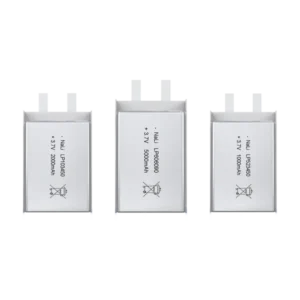
How Does a Pouch Cell Work
Inside the pouch, the battery works just like other lithium-ion batteries:
A typical pouch cell contains three key components:
Anode (−) – usually made of graphite
Cathode (+) – often made of lithium metal oxide
Electrolyte – a special liquid or gel that enables lithium-ion transport between the anode and cathode
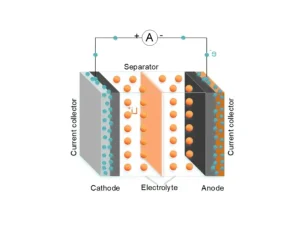
Charging:
When you plug in your device, lithium ions move from the cathode to the anode, storing energy in the process.
Discharging:
When the device is turned on, the ions flow back to the cathode, generating an electric current to power the device.
Because the pouch cell is soft and flexible, it can expand slightly when in use, so it needs to be placed inside a protective structure (like a phone or car battery pack) to keep it safe.
How Is a Pouch Cell Made
The manufacturing process of a pouch cell battery includes the following key steps:
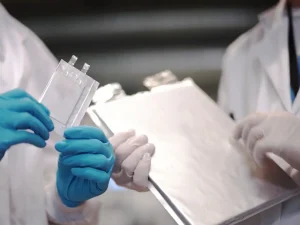
Electrode Preparation
Active materials are coated onto metal foils (aluminum for cathode, copper for anode).
Drying and Cutting
Coated electrodes are dried to remove solvents and then cut into specific shapes.
Stacking
Positive and negative electrodes are layered with a separator in between.
Electrolyte Filling
The electrolyte is added to allow lithium ions to move between electrodes.
Vacuum Sealing
The electrode stack is sealed inside a flexible pouch to prevent contamination.

Formation and Testing
The cell is charged/discharged to activate it and verify safety and performance.
Module Assembly
Multiple pouch cells are grouped into a module for applications like EVs or storage.
Key Characteristics of a Pouch Cell Battery
- Flexible Packaging: The cell is enclosed in a heat-sealable foil pouch.
- High Energy Density: More active materials can fit into the same space.
- Lightweight Design: The soft outer casing reduces weight.
- Shape Versatility: Manufacturers can customize the size and shape to fit various devices.
Where You’ll Find Pouch Cells
Pouch cell batteries are used in many everyday items, primarily because they’re small, lightweight, and can hold a substantial amount of power.
You’ll see them in:
- Electric cars – They help keep the car lightweight and extend the battery’s lifespan. Many car companies use them for that reason.
- Phones and laptops – These need slim batteries that still pack a punch, and pouch cells do the job.
- Smartwatches and fitness trackers – These small devices have limited internal space, so they require extremely thin batteries. That’s where pouch cells come in.
- Home battery systems – People who use solar panels often need a way to store the power they generate. Pouch cell batteries work well for that, both in homes and small businesses.
- Medical gear – Things like portable monitors or the equipment doctors carry around also use these batteries. They’re small, safe, and easy to move around with.
So yes, they’re in more places than you’d probably expect, quietly doing their job.
Why Pouch Cells Are a Pretty Smart Choice
There are several reasons why pouch cell batteries are so popular, especially in devices where space and weight are significant. Here’s why people love using them:
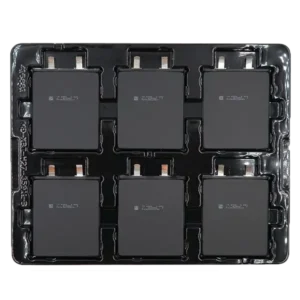
They save space.
Pouch cells don’t have a hard shell like some other batteries, so they can be shaped to fit in tight or odd spaces. Super handy when there’s not much room to work with.
They’re light and small.
Due to their flexible design, they weigh very little. That’s a significant advantage in applications like drones or electric cars, where reduced weight translates to improved performance.
They pack a lot of energy.
Even though they’re small, they store a lot of power. That means longer battery life for your gadgets or more mileage for your EV.
They’re more efficient.
Pouch cells are built in layers, which helps them deliver power better and waste less energy. So your device runs smoother and stays cooler.
They’re simpler to make.
Since they don’t need a big metal case, they use fewer materials, and that can cut down on production costs. Fewer parts also mean fewer things that can go wrong.
All in all, pouch cells are a solid option when you want something powerful, compact, and efficient.
A Few Downsides to Keep in Mind
Even though pouch cell batteries have a lot going for them, they’re not perfect. Like anything, there are a few trade-offs:
They can swell up
Over time or if they’re pushed too hard gases can build up inside and make the battery puff up. That’s why a good battery management system is important to keep an eye on things.
They’re not super tough
Since they don’t have a hard outer shell like other batteries, pouch cells can get squished or damaged more easily. Most devices using them need extra protection built in.
They need good cooling
Pouch cells can get hot, especially if they’re working hard. Without proper cooling, they can overheat. So thermal management is something designers have to take seriously.
Pouch cells are great but like with anything, you’ve got to know how to handle them right.
Pouch Cells VS Cylindrical and Prismatic Cells
When choosing a lithium-ion battery format, you must compare pouch, cylindrical, and prismatic types. Each has strengths and limitations.
Cylindrical Cells
Cylindrical batteries are robust, standardized, and excellent at dissipating heat. They are often used in power tools, laptops, and some electric cars.
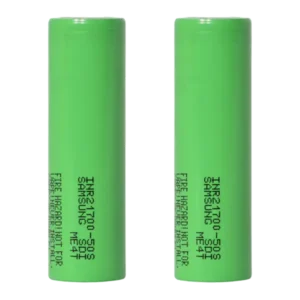
Prismatic Cells
These batteries use a hard rectangular case and offer high energy density. While more durable than pouch cells, they are less space-efficient due to fixed shapes.
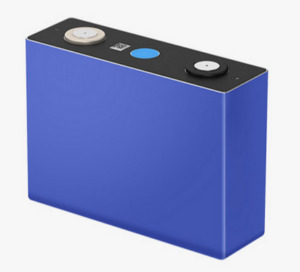
Summary Table:
| Feature | Pouch Cell | Cylindrical Cell | Prismatic Cell |
|---|---|---|---|
| Energy Density | High | Medium | High |
| Size Flexibility | Excellent | Low | Low |
| Mechanical Durability | Low | High | High |
| Heat Management | Needs Design | Good | Moderate |
| Cost Efficiency | Moderate | High | Low |
Staying Safe with Pouch Cells
Pouch battery cells work really well, but like all li-ion battery pouch cell, need to be handled the right way to stay safe. Here’s what helps keep them in check:
- Battery management systems (BMS): These smart systems make sure the battery doesn’t get overcharged or drained too much — both of which can cause problems.
- Cooling setups: Things like heat sinks or cooling channels help keep the battery from getting too hot, especially during heavy use.
- Tough casings: Since pouch cells are a bit delicate, they’re usually protected by strong outer shells to prevent damage from bumps or drops.
Good packaging and careful handling are also super important. Before these batteries ever make it to stores or devices, manufacturers test them thoroughly to meet international safety standards.
FAQs About Pouch Cells
What is a pouch cell battery?
A pouch cell battery is a type of lithium-ion battery enclosed in a flexible aluminum or polymer-coated film. It is used widely in electronics, EVs, and energy storage systems.
How long do pouch cells last?
With proper use, pouch cells can last for 500–1000 charge cycles. This depends on usage patterns and temperature conditions.
Are pouch cells safe?
Yes, if designed and managed properly. They require protection from punctures and overheating, but with a BMS and secure packaging, they are very safe.
Why do pouch cells swell?
Swelling usually results from gas buildup due to chemical reactions, often from overcharging, high temperatures, or cell aging. It can be minimized with good design and charge management.
Final Thoughts
Pouch cell batteries are becoming more and more popular because they’re light, flexible, and store a lot of energy. That’s why they’re used in everything from phones and laptops to electric cars and even home energy systems. As battery technology keeps getting better, pouch cells are expected to become even safer and more efficient.
If you’re still deciding which battery type is best for your needs, it helps to look at the differences between lithium battery types. You will get a better idea of what might work best for your project.
